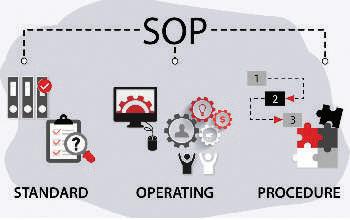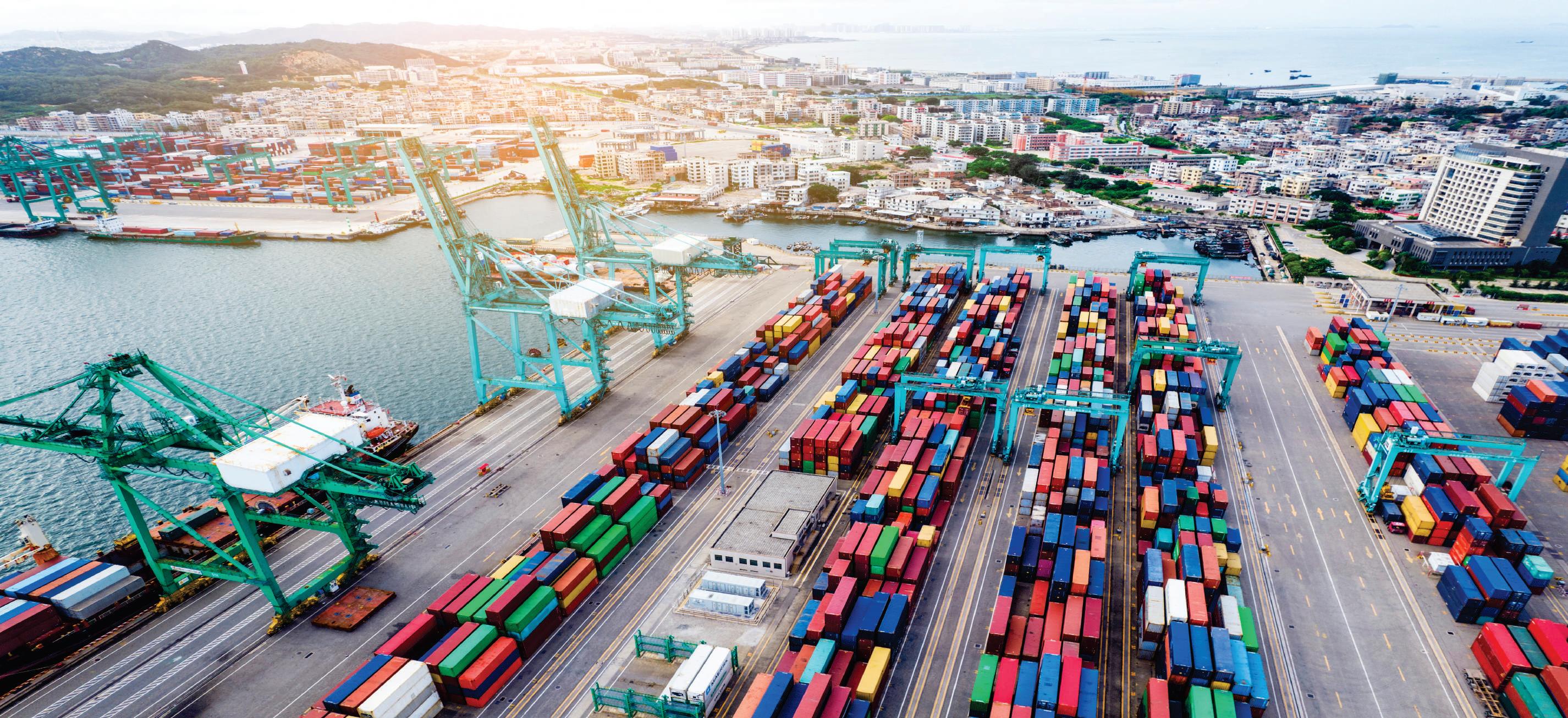
6 minute read
SAMEER PIKLE
[ 158 ] | COLUMN
SOP DIGITIZATION AS A 1ST STEP TOWARDS DIGITAL TRANSFORMATION
Advertisement
Engaging and supporting the operator of today into the future with guided process control
SAMEER PIKLE
NATIONAL HEAD - DIGITALIZATION MICROVERSE AUTOMATION
As businesses try hard to gain a competitive edge against their business competitors in today’s complex market scenarios the way operators perform their work in their manufacturing operations, has evolved drastically. Shifting from being purely functional to highly analytical, and becoming smart operators has become a necessity and an integral part of today’s business processes – significantly changing the way businesses operate and add value to archive their business outcomes.
Operators earlier were required to be proficient in following set procedures and achieve maximum production. Current operators are expected to be cross functional and go beyond duty to achieve stated business outcomes. In short be agile.
To think Digital Transformation is all about data and data driven technology would be belittling the contribution of the shop floor workers in this journey towards achieving Operational Excellence.For any improvement in overall efficiency of a plant or OEE any solution so proposed should take into consideration in the ease of doing work on the manufacturing lines / shop floor with minimal instructions and maximum compliance to Standard Operating Procedures (SoP)
To advance operator effectiveness, the latest Process Automation Controllers (PAC) enables operators to better leverage information in both routine and critical conditions for optimal decision making. Such intelligent PAC’s satisfies the growing need for tools that enable them to collect, connect, analyze, and act upon vast amounts of ral-time operations data, supporting a more engaged and intelligent workforce.
HISTORY OF MODULAR PROCEDURAL AUTOMATION
A procedural operation consists of a set of operator tasks that are conducted in a set way time-after-time to achieve a certain goal such as starting or shutting down a unit or making a product. As demonstrated by Paul McKenzie (Bristol Myers Squibb) at the World Batch Forum (WBF) North America conference 2007 in Baltimore, it could even apply to the operation of an analyzer. So how was the journey to modular procedural automation?
If you look back at the functions available to control systems for both programmable logic controllers (PLC) and distributed control systems (DCS), they focused on discrete and continuous control. Sequential and batch control functions were added later and the logic was more complex. Batch processes are more procedural in nature, but typically involve sets of procedures running in parallel on varying process units and in multiple process stages which almost always need to have built in flexibility. The ISA-88 standard ultimately addressed batch automation very well; however, attempts were made in the 1970s and 1980s to implement advanced procedure management using control system functions with strings of function blocks or by straight-line coded applications. These functions certainly could handle the sequential nature of procedure management but they had limited flexibility.
CURRENT INDUSTRY CHALLENGES:
One key area is in alerts and communicating to the operator. Work Process management and control require a complex interface but control systems by their very nature limit this ability. Therefore, providing
COLUMN | [ 159 ]
limited information to the operator hampered his ability to make procedure decisions, take action on alternatives, and realize the reasons for current process states and reasons for process deviations. Managing a procedure or process transition in automatic mode was non-effective and operators chose to accomplish procedure management manually.
Another difficult area to overcome was that most Standard Operating procedure (SOP) management involves unsteady state operation which includes many manual operations for the field and plant floor operator. This meant that the skill and knowledge of running the SOP stayed with the operators and operations staff and not with the control system.
The Chemical industry with both continuous and batch processes began implementing SOP digitization. Procedure and process transition flow charts with steps guided the operator from operator consoles.
TRANSITION MANAGEMENT
In its basic definition, transition management is a method of implementing advanced procedure management. The goal is to improve overall performance through faster and smoother transitions. This contributes to extended equipment life and optimized production and increased product yields. There are three broad operational procedures involving transitions: startup, shutdown and unit state change. The unit state change includes transitions like grade changes, production rate changes, process equipment switches, etc. Transition management applies equally to a complete process unit and to a selected piece of equipment in a processing unit, like a shutdown valve, or a heat exchanger. Transitions also inherently increase the risk of disruptions that can lead to incidents or lost production. Incidents that occurred during startup and shutdown continued to be a major factor. An additional study showed that examination of major incidents by the average loss per incident indicated that operational error caused the largest average dollar loss.
A fourth area that is added to transition management is “abnormal” process state changes, like a process trip resulting in a asset shutdown or a larger event causing a production shutdown. In some abnormal transitions, like a process trip, most of the time there is a window of opportunity for a process operator to reset the equipment and bring the operating conditions to normal. But this window is narrow needs to be effectively used
else it results in longer shutdown and higher production losses.These four categories of transition management which have been well known for the last 20 years in chemical industries.
CAPTURING & CREATING PROCEDURAL KNOWLEDGE BASE
The existing paper-based operator procedures are “static” in nature. The actual procedural knowledge and skill is with the operators. However, knowledge and the accompanying skill sets to run these procedures manually is diminishing. How to preserve the knowledge of the best operators and their practices is a challenge. SoP Digitization can help in capturing their activities and create a knowledge base. Level of technological complexity is increasing, the timely flow of information, data, and knowledge is more important than ever in the process industries.
PROCEDURAL OPERATIONS
The chemical facilities are run and maintained according to operational procedures and every process a SOP. A SoP has a set of tasks that are conducted in a sequence and in set time. These procedures require consistent execution. There are three main types of procedures: manual prompted and automated. 1. Manual: Manual procedures are performed by operators taking actions either in the control room or in the field. Often operators perform these procedures based upon their training and experience .There is always a variability associated with manual operations. Documentation is necessary for process improvement, compliance and additional data analysis. 2. Guided : Guided procedures are implemented in a control or manufacturing execution system which steps through the procedures, stopping at the end of each step or action and waiting for the operator to manually grant permission to continue. Prompted procedures can decrease variability, transition times and enable automatic record keeping. 3. Automated : Automated procedures are implemented in control systems and generally only stop at the end of normal operational sequences. If an abnormal situation takes place or an operator intervenes, the sequence can be held or perform exception handling. Automated procedures reduce variation and time.
Conclusions: The work already achieved in chemical industries has proven the value of SoP digitization. It creates operational knowledge base, process consistency which reduces operator dependence and improves production. n











